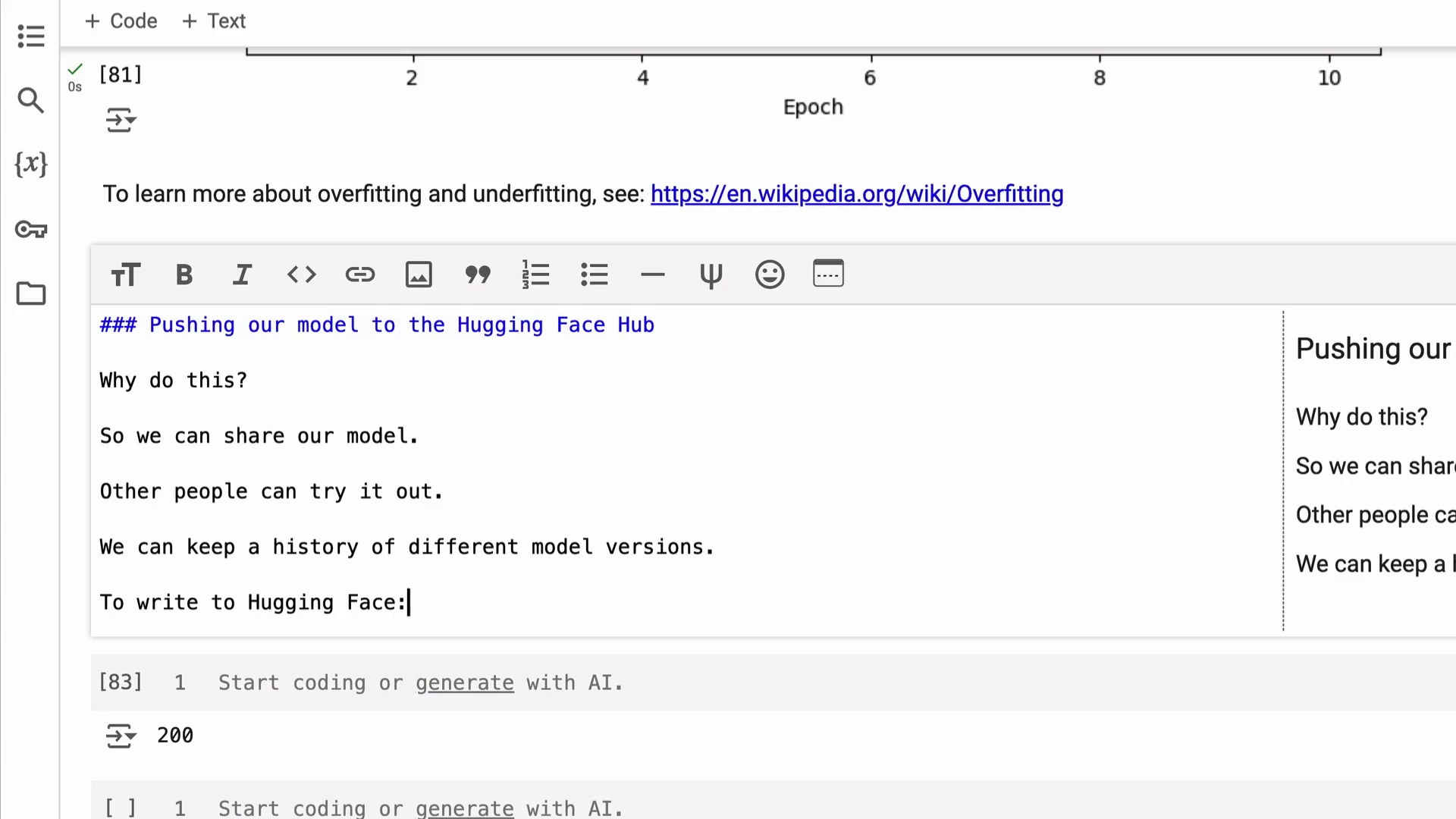01. Introduction (Hugging Face Ecosystem and Text Classification) - Zero - 1920x1080 619K
02. More Text Classification Examples - Zero - 1920x1080 490K
03. What Were Going To Build! - Zero - 1920x1080 810K
04. Getting Setup Adding Hugging Face Tokens to Google Colab - Zero - 1920x1080 868K
05. Getting Setup Importing Necessary Libraries to Google Colab - Zero - 1920x1080 914K
06. Downloading a Text Classification Dataset from Hugging Face Datasets - Zero - 1920x1080 818K
07. Preparing Text Data for Use with a Model - Part 1 Turning Our Labels into Numbers - Zero - 1920x1080 661K
08. Preparing Text Data for Use with a Model - Part 2 Creating Train and Test Sets - Zero - 1920x1080 582K
09. Preparing Text Data for Use with a Model - Part 3 Getting a Tokenizer - Zero - 1920x1080 892K
10. Preparing Text Data for Use with a Model - Part 4 Exploring Our Tokenizer - Zero - 1920x1080 700K
11. Preparing Text Data for Use with a Model - Part 5 Creating a Function to Tokenize Our Data - Zero - 1920x1080 883K
12. Setting Up an Evaluation Metric (to measure how well our model performs) - Zero - 1920x1080 788K
13. Introduction to Transfer Learning (a powerful technique to get good results quickly) - Zero - 1920x1080 780K
14. Model Training - Part 1 Setting Up a Pretrained Model from the Hugging Face Hub - Zero - 1920x1080 1022K
15. Model Training - Part 2 Counting the Parameters in Our Model - Zero - 1920x1080 903K
16. Model Training - Part 3 Creating a Folder to Save Our Model - Zero - 1920x1080 856K
17. Model Training - Part 4 Setting Up Our Training Arguments with TrainingArguments - Zero - 1920x1080 1233K
18. Model Training - Part 5 Setting Up an Instance of Trainer with Hugging Face Transformers - Zero - 1920x1080 1119K
19. Model Training - Part 6 Training Our Model and Fixing Errors Along the Way - Zero - 1920x1080 933K
20. Model Training - Part 7 Inspecting Our Models Loss Curves - Zero - 1920x1080 807K
21. Model Training - Part 8 Uploading Our Model to the Hugging Face Hub - Zero - 1920x1080 1009K
22. Making Predictions on the Test Data with Our Trained Model - Zero - 1920x1080 865K
23. Turning Our Predictions into Prediction Probabilities with PyTorch - Zero - 1920x1080 839K
24. Sorting Our Models Predictions by Their Probability - Zero - 1920x1080 651K
25. Performing Inference - Part 1 Discussing Our Options - Zero - 1920x1080 807K
26. Performing Inference - Part 2 Using a Transformers Pipeline (one sample at a time) - Zero - 1920x1080 890K
27. Performing Inference - Part 3 Using a Transformers Pipeline on Multiple Samples at a Time (Batching) - Zero - 1920x1080 1160K
28. Performing Inference - Part 4 Running Speed Tests to Compare One at a Time vs. Batched Predictions - Zero - 1920x1080 826K
29. Performing Inference - Part 5 Performing Inference with PyTorch - Zero - 1920x1080 851K
30. OPTIONAL - Putting It All Together from Data Loading, to Model Training, to making Predictions on Custom Data - Zero - 1920x1080 848K
31. Turning Our Model into a Demo - Part 1 Gradio Overview - Zero - 1920x1080 997K
32. Turning Our Model into a Demo - Part 2 Building a Function to Map Inputs to Outputs - Zero - 1920x1080 684K
33. Turning Our Model into a Demo - Part 3 Getting Our Gradio Demo Running Locally - Zero - 1920x1080 777K
34. Making Our Demo Publicly Accessible - Part 1 Introduction to Hugging Face Spaces and Creating a Demos Directory - Zero - 1920x1080 650K
35. Making Our Demo Publicly Accessible - Part 2 Creating an App File - Zero - 1920x1080 980K
36. Making Our Demo Publicly Accessible - Part 3 Creating a README File - Zero - 1920x1080 820K
37. Making Our Demo Publicly Accessible - Part 4 Making a Requirements File - Zero - 1920x1080 872K
38. Making Our Demo Publicly Accessible - Part 5 Uploading Our Demo to Hugging Face Spaces and Making it Publicly Available - Zero - 1920x1080 940K
39. Summary Exercises and Extensions - Zero - 1920x1080 1213K



